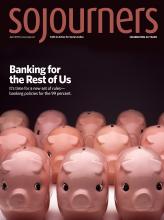I received an odd phone call in the afternoon of Election Day 2010. “I’m calling to let everyone know that Gov. O’Malley and President Obama have been successful,” the robo-voice said. “Relax. Everything is fine. The only thing left is to watch it on TV tonight.”
At the time, the call struck me as strange—the polls in the Maryland governor’s race, in which Democratic Gov. Martin O’Malley was running for reelection, were open for three more hours, and Obama wasn’t even on the ballot.
Turns out, the calls were ordered by the Republican candidate’s campaign manager, and they were aimed at voters in Baltimore and my home county, Prince George’s, the two largest majority-black jurisdictions in the state. A jury recently convicted the GOP campaign manager for what prosecutors called criminal acts intended to suppress black voter turnout.
Across the country, efforts to inhibit turnout in certain populations have been popping up all over. Some of them seem like Nixonian dirty tricks, such as the Milwaukee election material that warned that anyone found guilty of even a traffic violation was not eligible to vote, or the flyer supposedly from a local election board telling Republicans to vote on Tuesday and Democrats to vote on Wednesday.
But those illicit efforts pale next to the far-reaching campaign to change voting laws for 2012. Such changes include restrictions on voter registration drives, reductions in early voting, cutbacks in the voting rights of people who have finished their sentences for felonies, and—most pervasive—voter ID laws. In all, according to the nonpartisan Brennan Center for Justice, more than 5 million voters could be affected by these laws. In 2011, photo ID laws were introduced in 34 states and enacted in eight.
Read the Full Article
